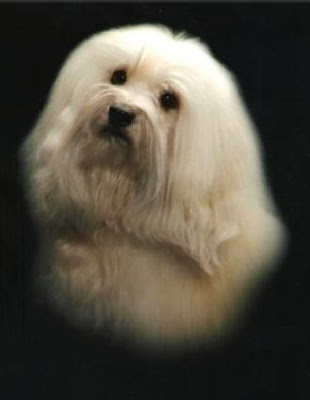Well, I can't make out what should I start with!!
ummm!! How if I start with the very scratch level. Yes, that's best. Let's talk about something very interesting. I found a few thousands of dog lovers so far but a very few .... very very few of them really showed interest about the
Evolutionary Process of Canidae. Here's how ....
Simply looking at them, it is really diffficlut to imagne as to how they evolved over millions of years. Canidae history spans us back to the era of
Creodonts -- some 100 to 150 millions fo years ago. This was a time when the giant size dinosaurs used to move around the place where you are now sitting and reading this piece. WIth the change of the climate the dinosaurs had to end their journey, while the Creodonts could manage to survive. Not only with what is known as canine today, but Creodonts also shared the common ancestors with all te carnivorous animals that we find these days.
Next come
Hesperocyons and
Miacis. While cats went on developing down from the Miacis, the Hesperocyons are believed to be the chief ancestors of what is known as dogs today. The survey and studies followed by the fossil findings of the Hesperocyons say that it is not les than 42 million years ago that Hesperocyons came into being. They had the inner ear anatomy characteristics almost similar to present day's dogs.
Although there are two schools of thoughts. While the first group use to believe that the dogs came from Hesperocyons the other group stands deadly againt this. Doesn't matter whether directly or inderectly, the dogs are descending form Hesperocyons, says the scientists.But by this time another animal had also appeared that had a fifth toe. It is believed that this fifth toe have been shortened in to what is called
"dew claws" of dogs today. Their feet and paws resembled almost like that of our present dogs. This happened during a time between the age of Hesperocyons and the
Miocene period.Around 12 million years ago before our time (during the miocene age), appeared the Wolf-like creature called
Tomarctus. They used to live in pack. Have you spare a thought on the dogs' "Pack Instinct"??? This instinct was the notable features of Tomarctus. We'll talk about the dogs pack instincts sometime later. Most interestyingly Tomarctus had marked the beginning of the tooth anatomy of our modern dogs.
Gradually, with the passage of time, the basic foundation(according to the modern researchers) had appeared by the fag end of the
Pliocene era(some 2 millions years ago).These were from the Canidae family, which was the direct root of the wolves, jackals, foxes, hyenas and ULTIMATELY THE DOGS!!!!!
Up Next !!!! Some really Interesting Dog Facts. Keep in touch!




 Well, I am sure that you are interested in dog world and canine breed -- otherwise you wouldn't have dropped by "Welcome Dog Lovers" (WDL). Often people ask me, which breed of dog should be the right choice for them. The answer is not as simple as "the one that fascinates you the most"!!! Not again a big deal either. All you need to understand the dog breeds. Here's a simple guide that may help you understand what a canine breed actually is.
Well, I am sure that you are interested in dog world and canine breed -- otherwise you wouldn't have dropped by "Welcome Dog Lovers" (WDL). Often people ask me, which breed of dog should be the right choice for them. The answer is not as simple as "the one that fascinates you the most"!!! Not again a big deal either. All you need to understand the dog breeds. Here's a simple guide that may help you understand what a canine breed actually is.